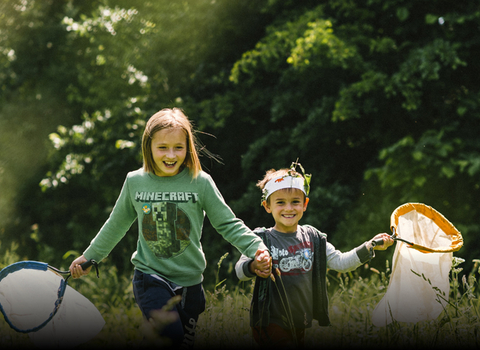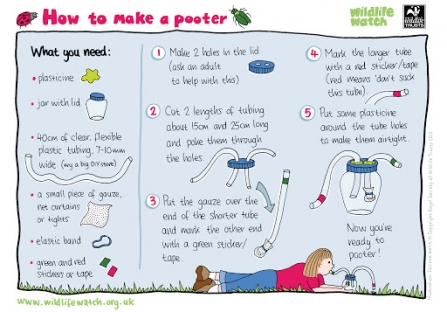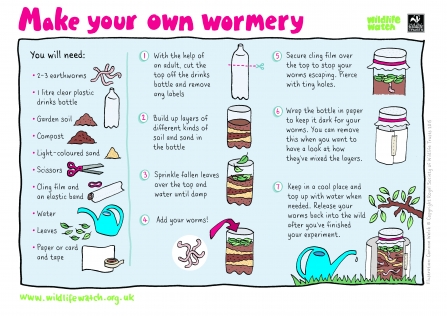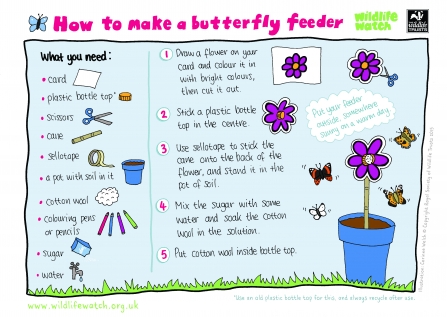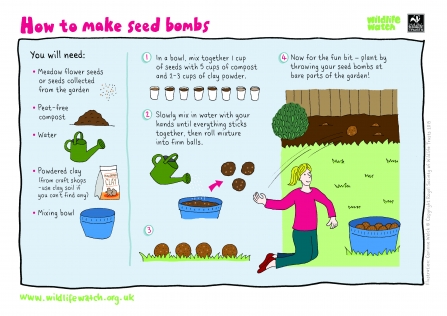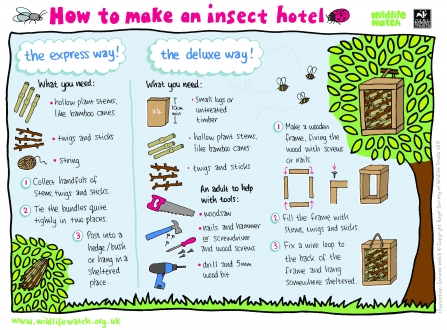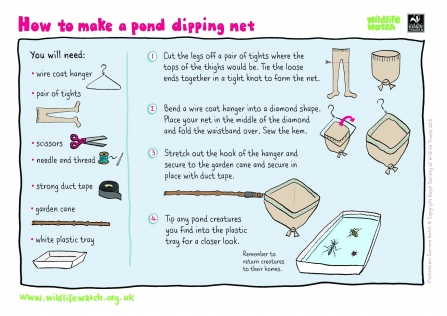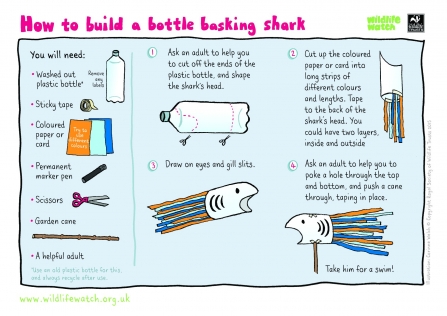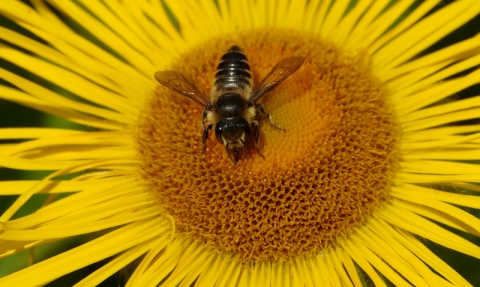
Photo credit, Gillian Day
Marvellous Minibeasts
Learning about 'Invertebrates'
Minibeasts and invertebrates really mean the same thing. Minibeast is the nickname used to describe all the 'little creatures' in the world. The proper more scientific term is 'Invertebrates' and it describes all creatures that do not have a back bone (a spine) ! So this not only includes, butterflies, bees, woodlice, snails etc. but also things we might find in the sea like sea anemones and crabs. In this section we have provided some simple activities to first learn about the mini-beasts in our garden with guides on how to help look after them AND then scroll down to learn a little about some marine minibeasts too - the little critters that live in the sea!
What is an Insect?
As said above, there are lots of different types of invertebrates. An Insect is a type of Invertebrate. In order to be an insect they must have the following:
6 Legs
3 Body Parts
Wings
Antennae
So both beetles and woodlice are Invertebrates BUT only the beetle is an insect. Beetles have 6 legs, 3 body part and wings where as woodlice have 14 legs, one body part and no wings! What are woodlice then? Well they are 'Crustaceans' in the same family as crabs! Strange huh.
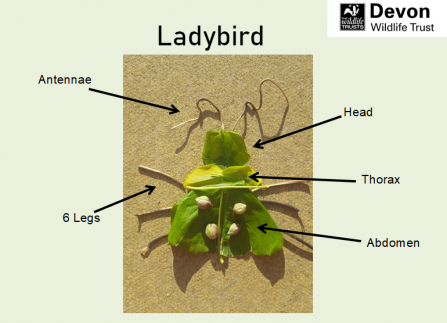
Insect Nature Art
Why not have a go at creating your own insect out of natural materials found in the garden or if not things found in the home?
Discover and Explore
Download Identification Guides
Garden Minibeasts
Snail Spotter
Spider Spotter
Butterfly Spotter
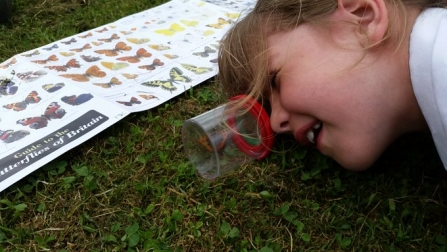
Go on a Minibeast Hunt
Have a look at one of our spotter sheets above to help you identify what creatures you have found. Look in all sorts of places, underneath rocks and logs (make sure they are not too heavy!), in the flower beds or underneath leaves. When you find a creature please remember to be gentle when handling them - and when you are finished looking at them to put them back where you found them.
Make a Pooter
Pooters can be really handy when out bug hunting. They allow you to collect minibeasts by 'sucking them up' (Not actually into your mouth don't worry!) Place one tube in your mouth and the other tube over the creature. When you suck up the air the creature should be carried up into the pot. Its very important you have some mesh on the tube that you suck so that you don't end up sucking the critter into your mouth!!
Study Worms
Worms are really important as they help break down old plants and and turn it into soil, which in turn helps to make a really healthy compost for more plants to grow in and so on. Why not have a go at this activity - study what the worms do when they work their magic!
How to help garden minibeasts
Action For Insects Campaign
Ask an adult to sign up for more info on helping insects
More arty Ideas
Make a Bumblebee
Make a Butterfly Model
Marine Minibeasts
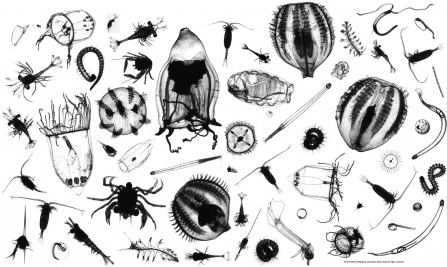
© 2020 Marine Biological Association, all rights reserved
Plankton
What is plankton? Plankton is a mixture of MICROSCOPIC (tiny) plants and animals that drift along in ocean currents! There is one exception to the size rule and that is of course Jellyfish, who are also considered plankton! The animal plankton is known as ZOOPLANKTON which eats the plant plankton called PHYTOPLANKTON! Nearly all plankton are INVERTEBRATES, except for some types of fish, who start off life in the plankton! Just like our little minibeasts on land, plankton are just as important in the food chain - which means a lot of things need to eat them! (Pictured)
Click to find out more about Plankton
Make your own net
If you are lucky enough to have a pond in your garden or live near a stream, why not have a go at making pond dipping net? You could not only look for plankton (yes plankton live in ponds and streams too!) But you can also see what other minibeasts might live in the ponds too.
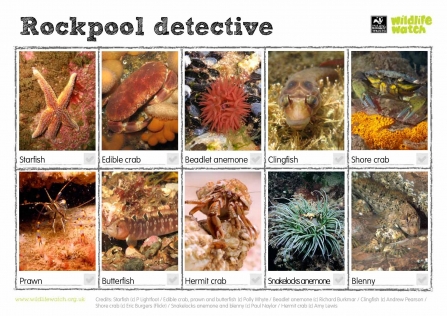
Above are some pictures of more INVERTEBRATES (or marine minibeasts!) that you might find at the seaside. The fish however are NOT invertebrates because they have a backbone (a spine!)
Basking Shark Craft
You might be wondering what the second largest fish in the world has to do with minibeasts!? Well, did you know that Basking Sharks love to eat microscopic plankton!? As we said, plankton are a really important part of the food chain. Why not have a go at making your own super cool basking shark using an old bottle?

Thanks to South West Water for supporting the production of these online marine resources
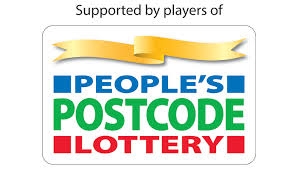
Thanks to Player's of Peoples Postcode Lottery for supporting the production of these online resources
Join the conversation
Everyday we are posting ideas for things to do on our Facebook page. If you've taken part in any of these activities, take a photo and get an adult to share it with us and help inspire others to get involved!

